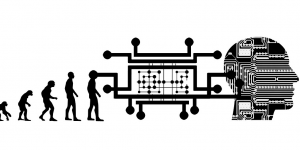Program Management is a different sort of project management and until now we have never mentioned it in our blog. In our articles we have always talked about project management and never about program management. Let’s have a look at what it is all about.
CONTENT
Let’s start by saying that in both cases we have to deal with two key actors: Project Management, which by now we should know quite well, and Program Management. However, what is the difference between these two if in both cases they manage projects?
Actually, the program manager and the project manager can share similar responsibilities, but there are some key differences between the two positions.
The same applies to program management as to project management.
Program management vs Project management: Projects vs. Programs
Before discussing the similarities and differences between the two figures, it is essential to understand what separates the projects from the programs.
They are generally limited by costs, resources, budgets and time and generally have a clear and objective end date that delivers tangible results.
The programs, on the other hand, consist of a large number of interconnected projects.
While in the Project the single project is an end to itself and once completed brings immediate benefit to the enterprise, in the Program management interconnected projects are widely discussed.
They are projects that complement and develop one another to achieve a broader and longer-term goal.
A successful program brings strategic benefits and organizational growth, rather than a single tangible result.
What is a Program Manager?
When we talk about program managers, we mean the person who shapes the strategy and objectives of a program and assesses how it will impact the organization in general.
The Program Manager must define and supervise a set of dependent projects necessary to achieve the overall objectives of the program.
A program manager, in short, can be compared to an architect who designs a project.
Architects do not install plumbing and do not build walls, but they do ensure that all these pieces come together to create and shape a particular building.
The role of the program manager transcends the completion of individual projects – for example: the electrical system or the construction of walls – but it takes care of the long-term implementation of the entire program – i.e. the construction of the building.
The responsibilities of a program manager include recruiting teams, implement strategies, measure ROI and other large-scale initiatives.
Program Manager priorities
A program manager typically supervises multiple projects and people, which requires strategic resource allocation and planning.
Sometimes individual projects need to be suspended or discontinued to ensure that the overall objectives of the program are heading in the right direction.
The typical tasks of a program manager are:
- Define and assign projects within the program and work with the project manager to set a time frame, budget and the required manpower and resources.
- Routine checks with project managers on the status of the project, as well as with senior managers, customers and other parties involved.
- Re-qualify, downgrade, promote or add projects to a programme, if necessary, and adjust the timing and expectations of stakeholders and staff, if required.
- Identify potential risks (company, programme and project level) to the programme and make timely adjustments and revisions to the process if necessary.

Differences with Project Manager
Project managers, on the other hand, supervise the operations of individual projects within the programs.
They coordinate the schedule, budget and resources to complete the work within the program guidelines and report the work progress to the program head and any changes made to the initial project plan.
The role of the project manager is more tactical than the position of the program manager.
As we saw in our previous example, the program managers are the architects, while the project managers are painters, plumbers and electrical engineers.
Project managers focus primarily on the execution and management of the functional elements of the project, i.e.:
- meeting deadlines,
- observance of the budget,
- delegation of activities
- achievement of the results.
It is true that program managers and project managers have different roles, but their challenges are similar.
Although they have different daily responsibilities, both program managers and project managers supervise many dynamic parts and must ensure maximum organization and efficiency.
Common tools for both the Program Manager and Project Manager
These two actors can meet many similar or equal challenges and benefit from the use of similar techniques and tools. Let’s see which ones:
- Dashboard: A clear picture of the status of activity and advancement is crucial when success depends on several people and dynamic parts. Every program manager and project manager should have a dashboard that shows exactly who is working on what. There are several project management software that allows one to have a dashboard with these properties and with the most diverse functionalities.
- Templates: Many programs feature similar projects. For example, each marketing project could involve an advertising campaign. Instead of starting from scratch each time, project managers, along with program managers, should structure their work and prepare templates that can be reused for similar jobs. This minimizes the need for new initiatives and helps replicate past success stories. In a nutshell, templates should contain best practices.
- Versatile work graphics: not all people work the same way, and each person has their own preferred working method. The work assigned by program managers and project managers is therefore much easier when the project team does not necessarily have to adhere to their work approach. It is important that a single program or project can be viewed from different perspectives and with different tools, such as tabs, charts, lists or Kanban timelines. This means that everyone involved can stay on the same page while using tools that make them feel comfortable.
- Contextual partnership: Keeping track of each resource, update and request can be daunting. Browsing through emails and spreadsheets for details is a waste of time for both project managers and program managers. Keeping all program and project communications in a single thread that is readily available and understandable is therefore extremely useful.
When the right person is the program manager, this inevitably becomes a valuable asset for the project managers whose projects are part of the program.
The program manager will tailor the program to meet the organization’s most important financial objectives to ensure the success of projects in all aspects.




